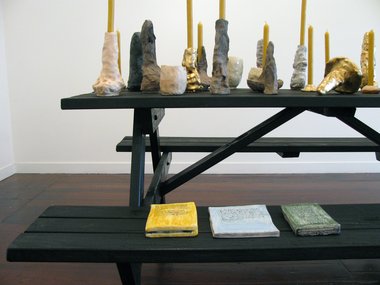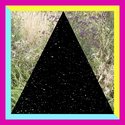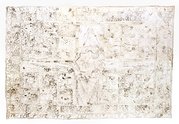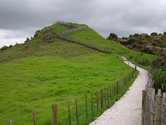John Hurrell – 7 July, 2012
He has constructed here a layered, openly theatrical model of the occult, mixing in homo-eroticism with overtones of manual labour, but without muscled brutality or sticky carnality. It has a sweetness and an innocent sense of play - and is gorgeously sensual with its trashy camp, glowing flowers, misshapen phallic symbols and flames of passion.
Auckland
Richard Orjis
by quiet volcanoes
Featuring work by Rebecca Ann Hobbs and Tessa Laird
13 June - 7 July 2012
Richard Orjis is well known for his amazing colour photographs of dirt encrusted young men clutching bundles of orchids or other flowers, grimy muddy earth (sometimes coal dust) smeared over their faces, shoulders and torso, and kneaded into their hair - the exotic looking petals and stems glowing radiantly.
As artists are wont to be Orjis can be contrary, and so for this slot during Auckland’s yearly photography festival there is not a photograph to be seen, though there is a Rebecca Ann Hobbs video showing him and his friend (and contributor to Orjis’ new book, Park) Harry McNaughton walking up and down a path to the top of Mount Mangere.
Orjis is often fixated on a form of magic ritual he has devised that uses tinselly streamer wigs, grille masks, various glittery objects and lumpy ceramic candle-sticks (on a picnic table) to advocate what he calls ‘The Empire of Dirt’. And in the tradition of seventies English ‘earth artist’ Richard Long he also makes drawings on paper using mud.
He has constructed here a layered, openly theatrical model of the occult, mixing in homo-eroticism with overtones of manual labour, but without muscled brutality or sticky carnality. It has a sweetness and an innocent sense of play - and is gorgeously sensual with its trashy camp, glowing flowers, misshapen phallic symbols and flames of passion. Drawings of long-haired boys (in the book), orchids and fruit celebrate earth as a messy surface covering material as well as possibly a symbol of place.
The fact that the main sculptural presence in this exhibition is a picnic table says a great deal. The ritual is like a recreational outing, a relaxed drive on a Sunday afternoon (as shown by Hobbs). It’s informal, and so the dirt can be casually washed off: it is anti-essentialist, not embedded deeply as ‘truth.’
These props are distancing devices. They speak about art itself, visual gratification and entertainment, but make no claims for spiritual profundity - if such a thing is possible. They are deeply Warholian in that sense. They are flip but also mentally engaging.
John Hurrell










 Two Rooms presents a program of residencies and projects
Two Rooms presents a program of residencies and projects Advertising in this column
Advertising in this column



This Discussion has 0 comments.
Comment
Participate
Register to Participate.
Sign in
Sign in to an existing account.